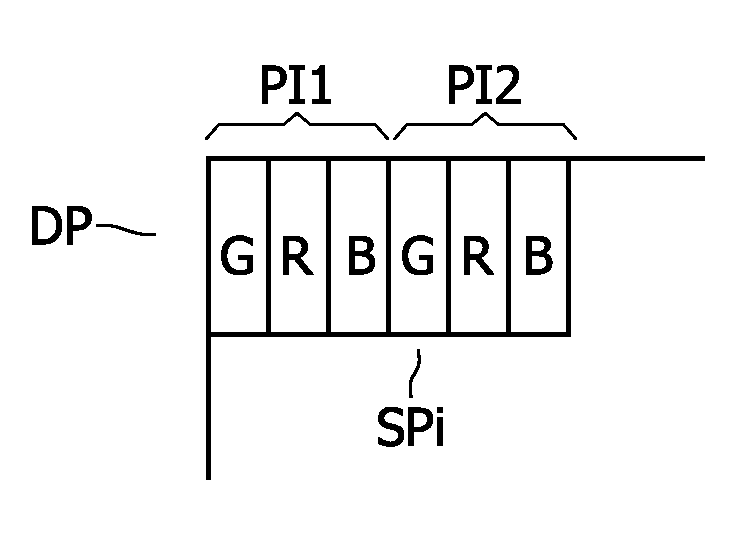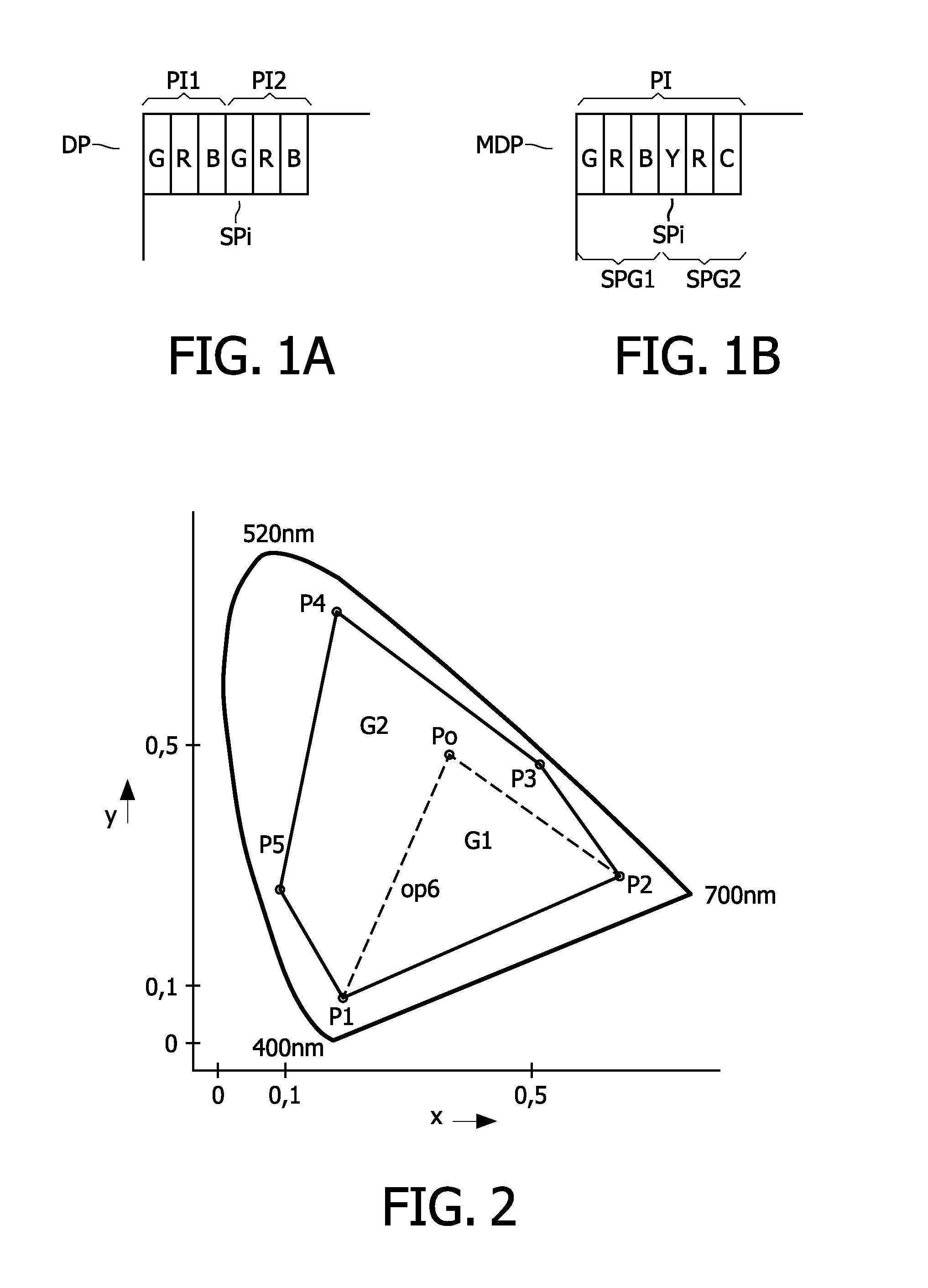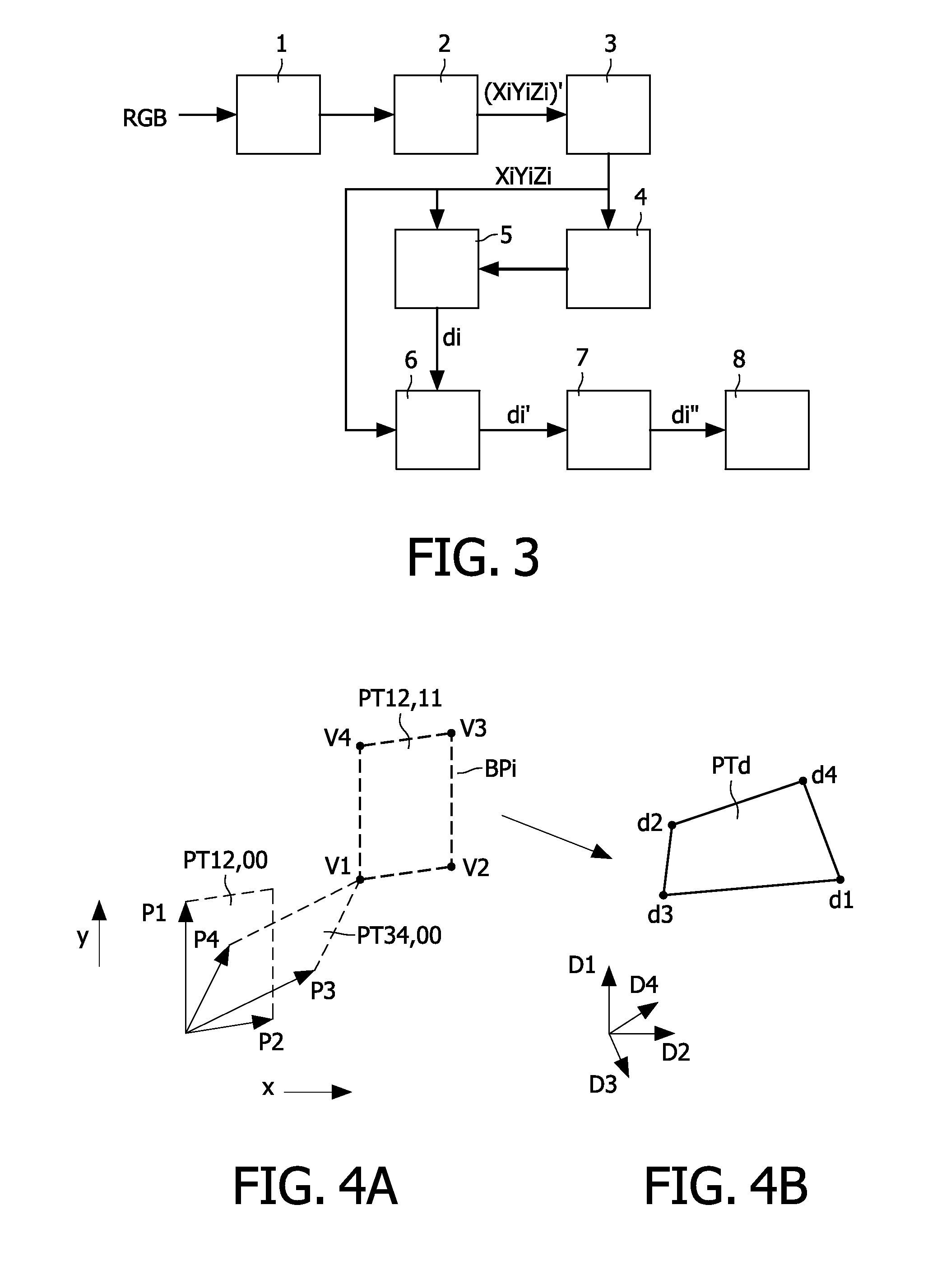Multi primary conversion
a multi-primary conversion and conversion method technology, applied in the field of multi-primary conversion, can solve the problems of complex and delicate conversion process, freedom must be limited in a smart way, and achieve the effect of improving computational efficiency
- Summary
- Abstract
- Description
- Claims
- Application Information
AI Technical Summary
Benefits of technology
Problems solved by technology
Method used
Image
Examples
Embodiment Construction
[0051]FIG. 1 schematically shows a pixel arrangement of a conventional RGB display and a multi-primary display with 6 color primaries. An actual display may have much more pixels than shown.
[0052]The RGB display DP has pixels PI1, PI2 each with three sub-pixels SPi which have the colors R (red), G (green), B (blue). The input signal which has to be displayed on the display DP has RGB or other components, such as for example YUV, which can easily be converted into RGB components. These RGB components define the drive values for the respective RGB sub-pixels. Because the number of sub-pixels per pixel is identical to the number of components of the input signal, the drive values can be deterministically found from the RGB components.
[0053]The multi-primary display MDP has pixels PI with 6 sub-pixels SPi which for example have the colors GRBYRC, wherein G is green, R is red, B is blue, Y is yellow, and C is cyan. In this example, the first group of sub-pixels SPG1 comprises the colors ...
PUM
 Login to View More
Login to View More Abstract
Description
Claims
Application Information
 Login to View More
Login to View More - R&D
- Intellectual Property
- Life Sciences
- Materials
- Tech Scout
- Unparalleled Data Quality
- Higher Quality Content
- 60% Fewer Hallucinations
Browse by: Latest US Patents, China's latest patents, Technical Efficacy Thesaurus, Application Domain, Technology Topic, Popular Technical Reports.
© 2025 PatSnap. All rights reserved.Legal|Privacy policy|Modern Slavery Act Transparency Statement|Sitemap|About US| Contact US: help@patsnap.com



